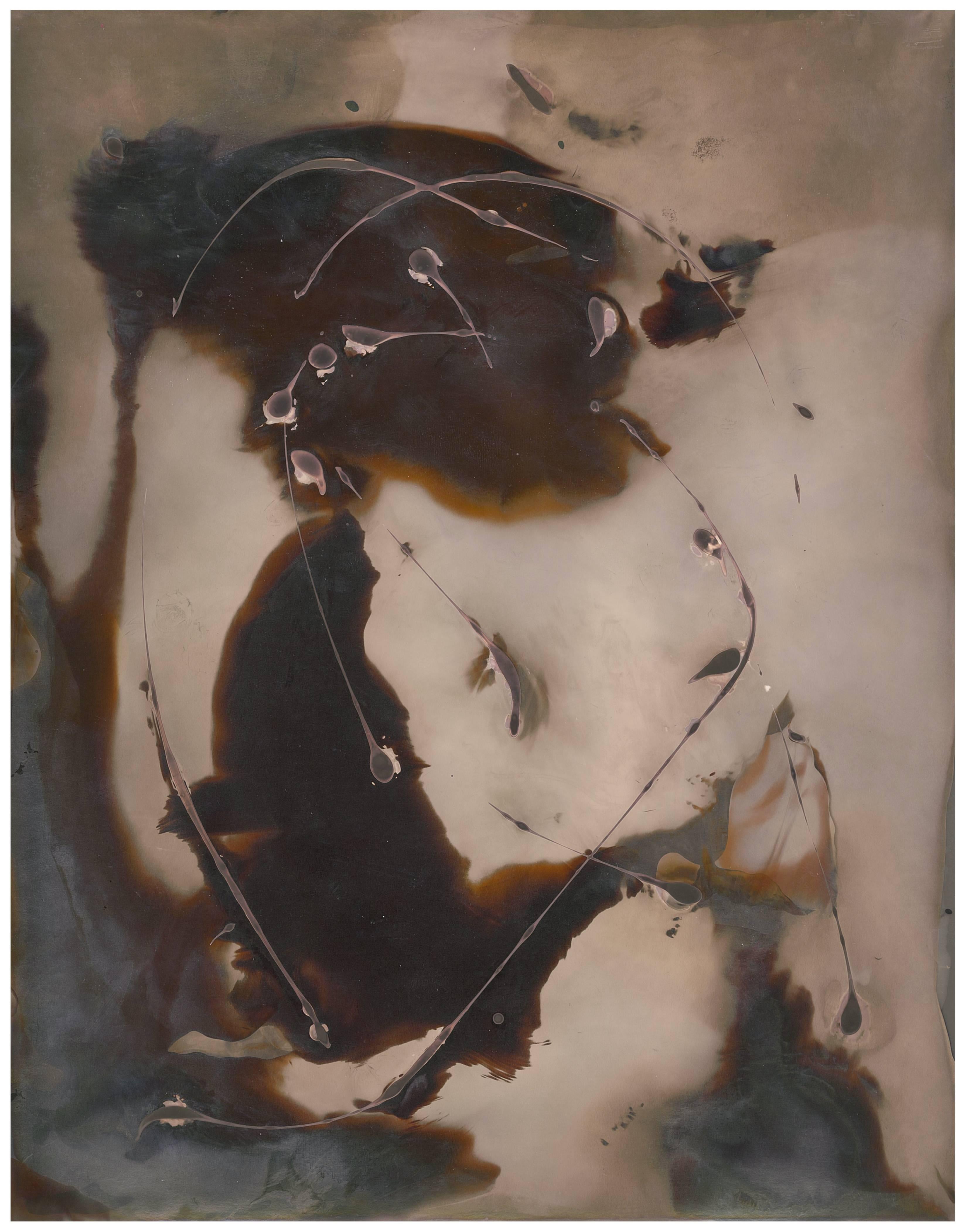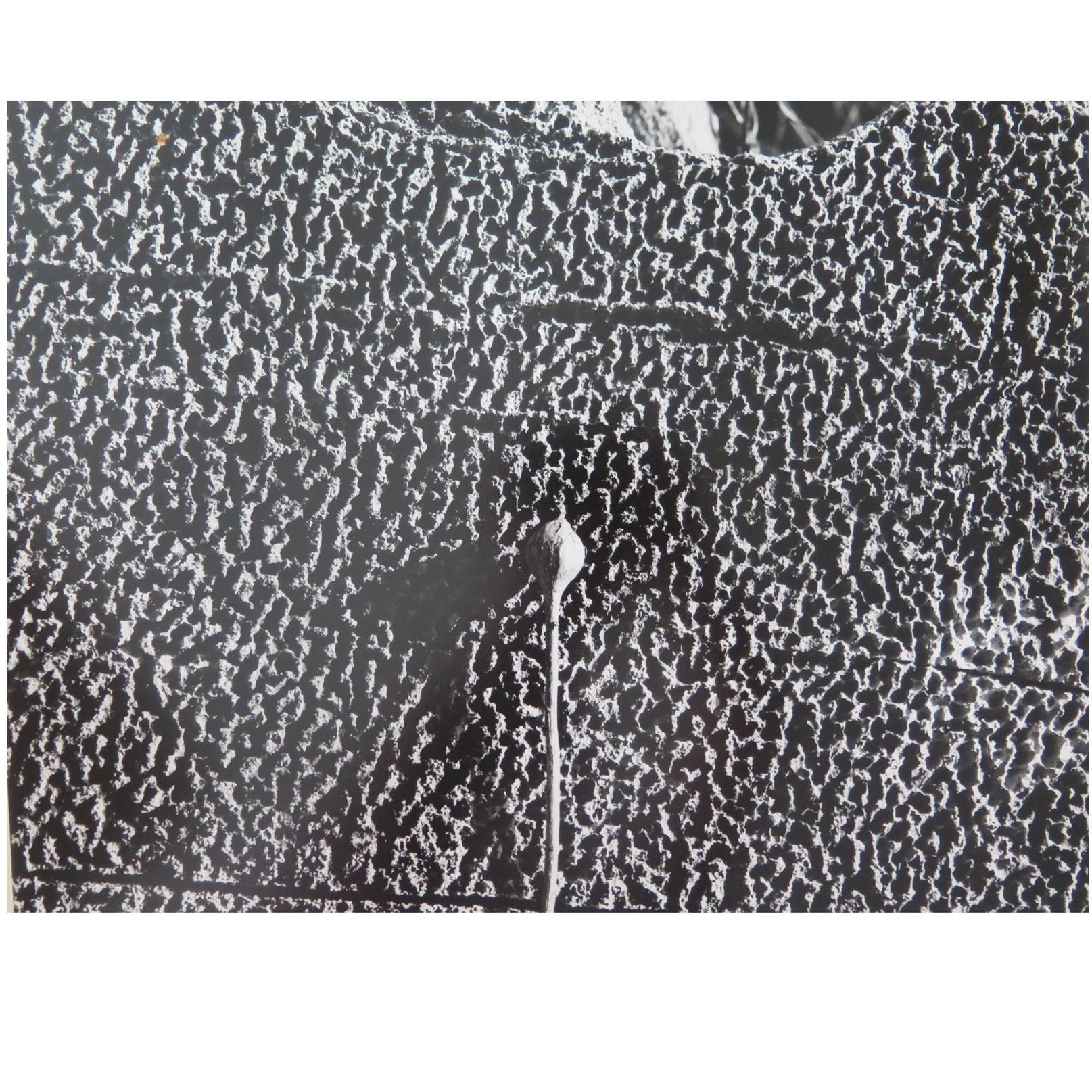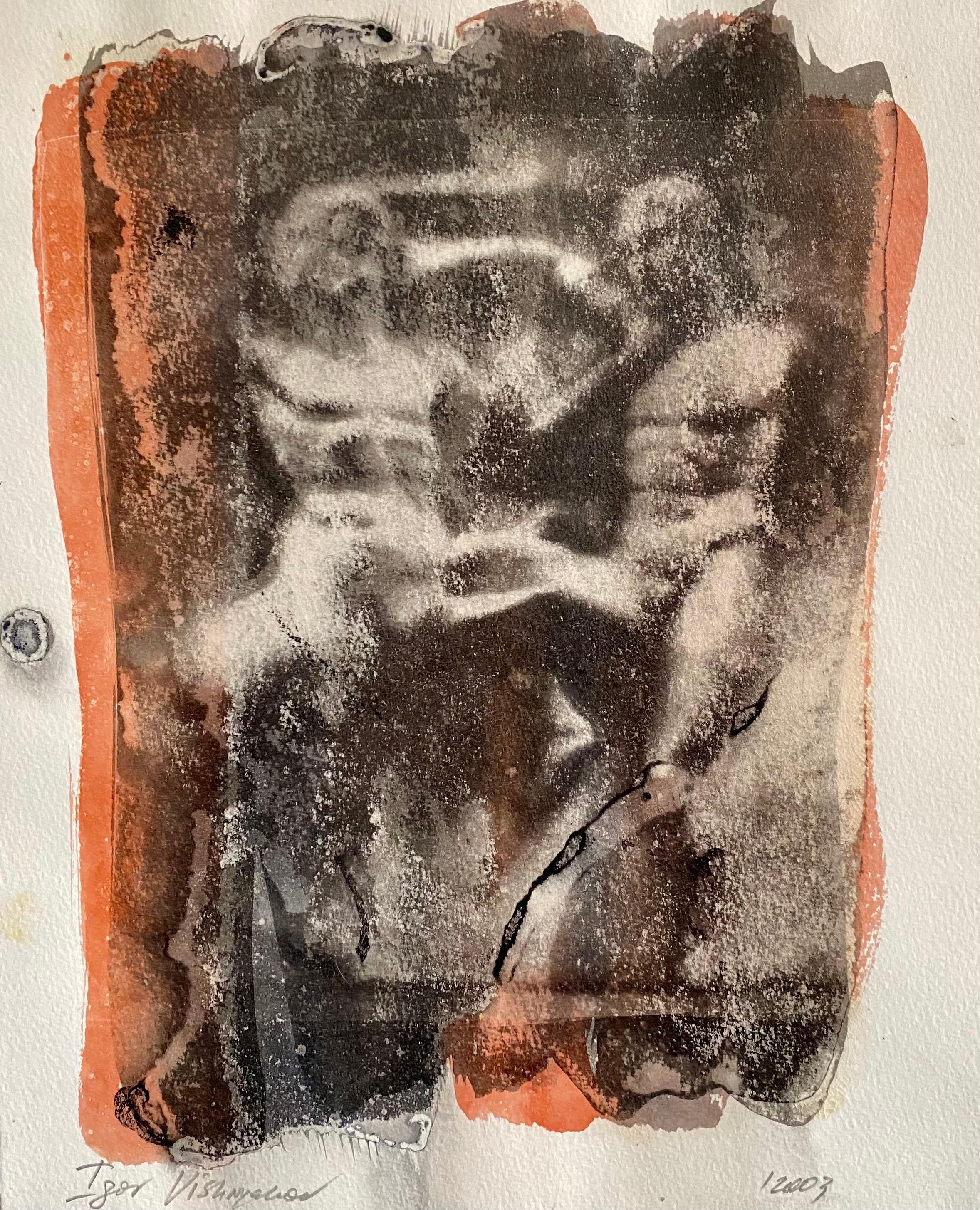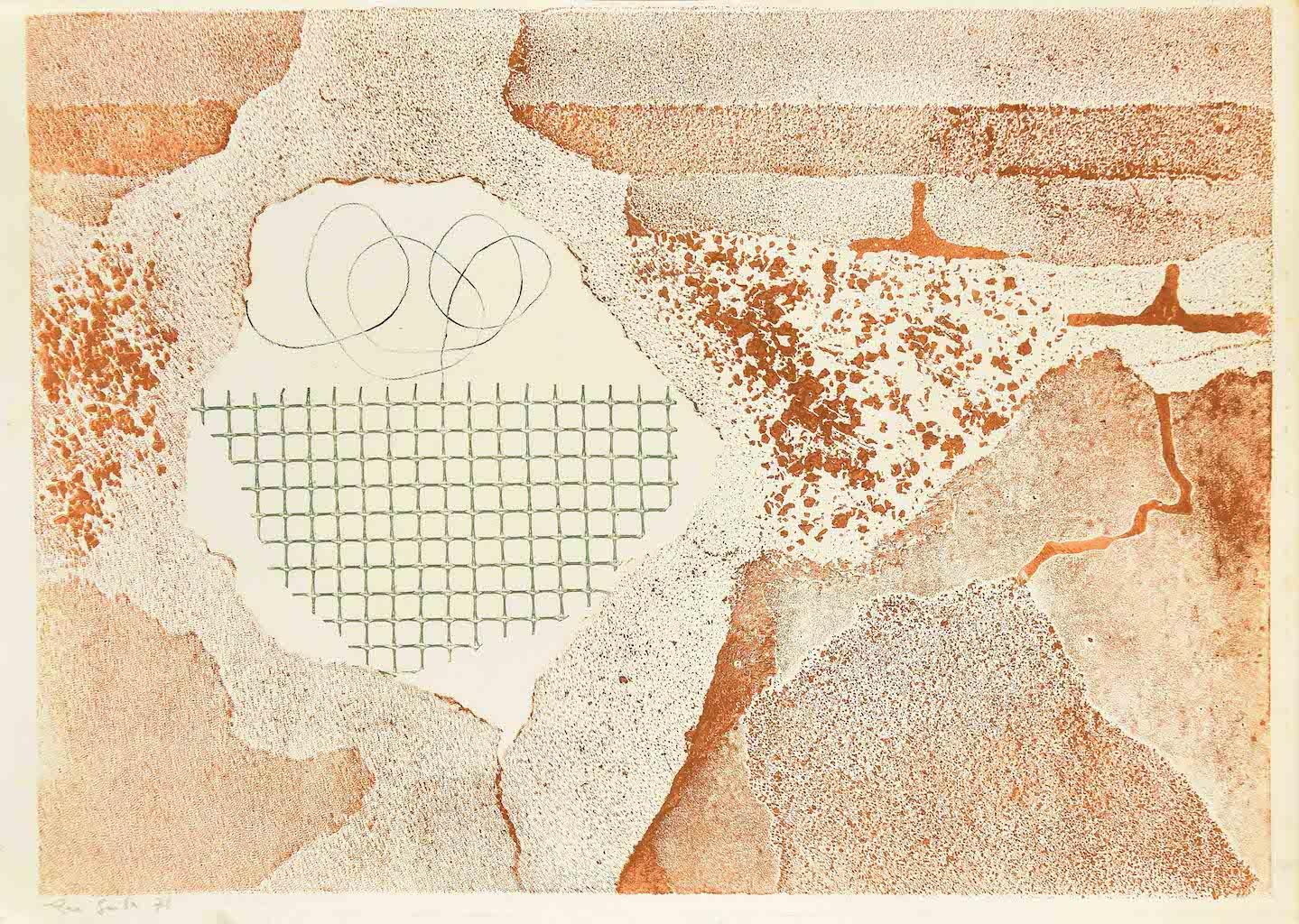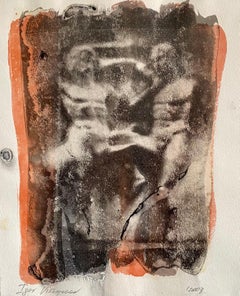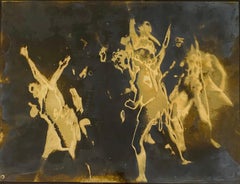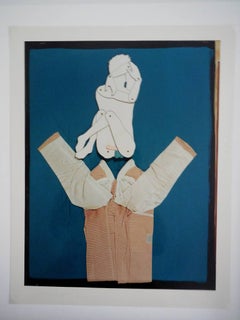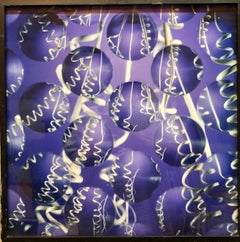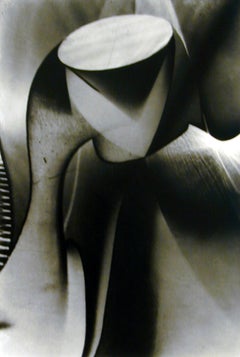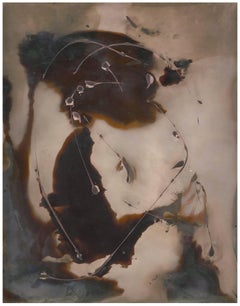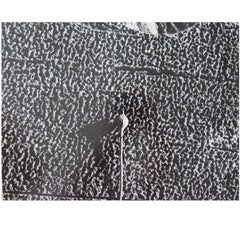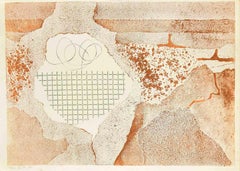Items Similar to Vintage Large Format Avant Garde Polaroid 20X24 Photograph
Want more images or videos?
Request additional images or videos from the seller
1 of 8
György KepesVintage Large Format Avant Garde Polaroid 20X24 Photograph1984
1984
$4,500
£3,385.08
€3,921.46
CA$6,344.07
A$7,055.03
CHF 3,702.26
MX$86,032.67
NOK 46,797.90
SEK 43,874.89
DKK 29,269.28
About the Item
Sorry for the reflection on the plexi. In the early 1980s, the Polaroid Foundation invited Hungarian-born painter and photographer György Kepes (1906-2001) to use the 20x24 Polaroid camera. The resulting carefully staged compositions summarize many of his artistic concerns, employing such objects as prisms, flowers, and graphic papers to manipulate the effects of light and form.
György Kepes 1906-2001 was a Hungarian-born painter, photographer, designer, educator, and art theorist. After emigrating to the U.S. in 1937, he taught design at the New Bauhaus (later the School of Design, then Institute of Design, then Illinois Institute of Design or IIT) in Chicago. In 1967 He founded the Center for Advanced Visual Studies at the Massachusetts Institute of Technology (MIT) where he taught until his retirement in 1974. Kepes was born in Selyp, Hungary. His younger brother was Imre Kepes, ambassador in Argentina, father of András Kepes journalist, documentary filmmaker and author. At age 18, he enrolled at the Royal Academy of Fine Arts in Budapest, where he studied for four years with Istvan Csok, a Hungarian impressionist painter. In the same period, he was also influenced by the socialist avant-garde poet and painter Lajos Kassak.
Kepes gave up painting temporarily and turned instead to filmmaking. In 1930, he settled in Berlin, where he worked as a publication, exhibition and stage designer. Around this time, he designed the dust jacket for Gestalt psychologist Rudolf Arnheim's famous book, Film als Kunst (Film as Art), one of the first published books on film theory. In Berlin, he was also invited to join the design studio of Laszlo Moholy-Nagy, the Hungarian photographer who had taught at the Dessau Bauhaus. When, in 1936, Moholy relocated his design studio to London, Kepes joined him there as well.
Kepes was lured to Brooklyn College by Russian-born architect Serge Chermayeff, who had been appointed chair of the Art Department in 1942. There he taught graphic artists such as Saul Bass.
In 1944, he published Language of Vision, an influential book about design and design education. In part, the book was important because it predated three other influential texts on the same subject: Paul Rand, Thoughts on Design (1946), László Moholy-Nagy, Vision in Motion (1947), and Rudolf Arnheim, Art and Visual Perception (1954).
In 1947, Kepes accepted an invitation from the School of Architecture and Planning at MIT to initiate a program there in visual design, a division that later became the Center for Advanced Visual Studies (c1968). Some of the Center's early fellows included artists Otto Piene, Vassilakis Takis, Jack Burnham, Wen-Ying Tsai, Stan Vanderbeek, Maryanne Amacher, Joan Brigham, Lowry Burgess, Peter Campus, Muriel Cooper, Douglas Davis, Susan Gamble, Dieter Jung, Piotr Kowalski, Charlotte Moorman, Antoni Muntadas, Yvonne Rainer, Keiko Prince, Alan Sonfist, Aldo Tambellini, Joe Davis, Bill Seaman, Tamiko Thiel, Alejandro Sina, Don Ritter, Luc Courchesne, and Bill Parker.
While teaching at MIT Kepes was in contact with a wide assortment of artists, designers, architects and scientists, among them Norbert Wiener, Buckminster Fuller, Rudolf Arnheim, Marcel Breuer, Charles Eames, Erik Erikson, Walter Gropius, Maurice K Smith, and Jerome Wiesner. His own art having moved toward abstract painting. He was a prolific painter and photographer, and his work is in major collections. In recognition of his achievements, there is a Kepes Visual Centre in Eger, Hungary. In 1973 he was elected into the National Academy of Design as an Associate member and became a full Academician in 1978.
György Kepes, Lucian Bernard, and Ivan Chermayeff. The 60th Art Directors Annual. New York: ADC Publications, 1981
- Creator:György Kepes (1906 - 2001, Hungarian)
- Creation Year:1984
- Dimensions:Height: 32.25 in (81.92 cm)Width: 27.25 in (69.22 cm)
- Medium:
- Movement & Style:
- Period:
- Condition:in raking light there are straight craquleure lines in the emulsion typical for such pieces. not visible at all when seen straight on in regular light. it also needs a new plexi.
- Gallery Location:Surfside, FL
- Reference Number:1stDibs: LU38212408512
About the Seller
4.9
Platinum Seller
Premium sellers with a 4.7+ rating and 24-hour response times
Established in 1995
1stDibs seller since 2014
1,794 sales on 1stDibs
Typical response time: <1 hour
- ShippingRetrieving quote...Shipping from: Surfside, FL
- Return Policy
Authenticity Guarantee
In the unlikely event there’s an issue with an item’s authenticity, contact us within 1 year for a full refund. DetailsMoney-Back Guarantee
If your item is not as described, is damaged in transit, or does not arrive, contact us within 7 days for a full refund. Details24-Hour Cancellation
You have a 24-hour grace period in which to reconsider your purchase, with no questions asked.Vetted Professional Sellers
Our world-class sellers must adhere to strict standards for service and quality, maintaining the integrity of our listings.Price-Match Guarantee
If you find that a seller listed the same item for a lower price elsewhere, we’ll match it.Trusted Global Delivery
Our best-in-class carrier network provides specialized shipping options worldwide, including custom delivery.More From This Seller
View AllPost Soviet Russian Avant Garde Photograph Mixed Media Gum Arabic Photo Painting
By Igor Vishnyakov
Located in Surfside, FL
Igor Vishnyakov is a Russian Postwar & Contemporary artist who was born in 1968 in Moscow. Igor spent his childhood in Africa and Southeast Asia. After returning to Moscow in the mi...
Category
Early 2000s Abstract Photography
Materials
Mixed Media, Photographic Paper
Abstract Photograph Post USSR Russian Avant Garde Solarized Photo Non Conformist
By Valentin Samarine
Located in Surfside, FL
Valentin Samarine started doing abstract painting in the 60s, and abstract photography in the 70s. He moved fairly easily from one to the other. It is in a perfectly logical sense: ...
Category
20th Century Abstract Abstract Photography
Materials
Photographic Paper
Large Harry Bowers Vintage C Print Photograph From Ten Photographs Fashion Photo
By Harry Bowers
Located in Surfside, FL
HARRY BOWERS
T E N P H O T O G R A P H S
I DON'T LOOK FOR PHOTOGRAPHS I INVENT THEM
I recall my first meeting with Harry Bowers in California a few years ago. As he produced his large-scale prints, I was at first flabbergasted, not only by their size, but by their seamless perfection. Technique appeared to be everything but then technique as technique simply vanished. After the first moment, technique was no longer an issue, but rather a passageway to the imagery.
Suffice it to say about Harry Bowers' working style that he is an obsessive man. Trained as an engineer, he has turned that discipline to art. His lenses, equipment and darkroom, much of it exactingly manufactured by himself to answer certain needs, serve the desire of the artist to take photographic technique to its ultimate perfection in invisibility and transparency. I respect obsession in art, and particularly in photography, because obsession in photography passes beyond the easy, middle ground of image making to a more demanding, more difficult, yet more rewarding end. Bowers' obsession is to eliminate "photography as technique." No grain, no decisive moments, no journalism, or, seemingly, direct autobiographical endeavors appear in his work.
Bowers is an artist of synthesis who controls his environment if only in the studio exactly to his liking. The images he creates are formal structures, saucy stories on occasion, which may offer hints of a darker, more frightening sexuality, but what you see is the end product of an experiment in which nothing save the original insight perhaps is left to chance.
We seem fascinated with the idea of replication of reality in art. Popular painting frequently reproduces a scene "with the accuracy of a photograph," and photographs may "make you feel as though you were right there." The very invisibility of the photographic medium is important to Bowers, in that it allows him to maneuver his subject matter without concern for rendering it in an obvious art medium which would interfere with the nature of the materials he uses. The formal subtleties of Bowers' recent work are as delicious and ambiguous in their interrelationships as the best Cubist collages, yet while those collages always suggest their parts through edge and texture, these photographs present a structure through a surface purity.
Bowers' earlier works, for example, the Skirts I Have Known series, were formed of bits of clothing belonging to Bowers and his wife or found at local thrift shops. These works fused an elegance of pattern and texture, reminiscent of Miriam Shapiro...
Category
1980s Arte Povera Photography
Materials
Photographic Paper, C Print
Vintage Large Format Abstract Unique Color Photo Polaroid Photograph Ellen Carey
By Ellen Carey
Located in Surfside, FL
Untitled, Unique photograph. Center panel from larger scale installation. Shot in the 20X24 format. (this measures about 20X20 inches)
Ellen Carey, American artist and photographer.
Ellen Carey resides in Hartford, Connecticut, and teaches at the Hartford Art School. She holds a B.F.A. from the Kansas City Art Institute, Missouri, and an M.F.A. from State University of New York at Buffalo. Her photographs have been exhibited at numerous galleries and museums, including the International Center for Photography, New York and the Fogg Art Museum at Harvard University, Cambridge, Massachusetts. She has received many grants from her home state of Connecticut as well as the Massachusetts Council of the Arts, New Works Grant, New York State Federation for Artists Grant; and a National Endowment for the Arts Award. Her photographs are in the permanent collections of The Art Institute of Chicago; the Baltimore Museum of Art; Brooklyn Museum of Arts; Chase Manhattan Bank; Coca Cola Corporation; Fogg Art Museum; George Eastman House; International Center for Photography; and the Los Angeles County Museum of Art, among others.
Abstract photography, sometimes called non-objective, experimental, conceptual or concrete photography, is a means of depicting a visual image that does not have an immediate association with the object world and that has been created through the use of photographic equipment, processes or materials. Some photographers pushed the boundaries of conventional imagery by incorporating the visions of surrealism or futurism into their work. Man Ray, Maurice Tabard, André Kertész, Curtis Moffat and Filippo Masoero were some of the best known artists who produced startling imagery that questioned both reality and perspective.
Both during and after World War II photographers such as Minor White, Aaron Siskind, Henry Holmes Smith and Lotte Jacobi explored compositions of found objects in ways that demonstrated even our natural world has elements of abstraction embedded in it. Beginning in the late 1970s photographers stretched the limits of both scale and surface in what was then traditional photographic media that had to be developed in a darkroom. Inspired by the work of Moholy-Nagy, Susan Rankaitis first began embedding found images from scientific textbooks into large-scale photograms. By the 1990s a new wave of photographers were exploring the possibilities of using computers to create new ways of creating photographs. Photographers such as Thomas Ruff, Barbara Kasten, Tom Friedman, and Carel Balth were creating works that combined photography, sculpture, printmaking and computer-generated images.
Any boundaries that remained between pure artists and pure photographers were eliminated by individuals who worked exclusively in photography but produced only computer-generated images. Among the most well-known of the early 21st century generation were Gaston Bertin...
Category
1980s Abstract Color Photography
Materials
Polaroid
French Contemporary Collotype Photograph Black White Photo Andre Naggar
By Andre Naggar
Located in Surfside, FL
Photos pictured of information cards after the images of the black and white photos are not included.
La Chute D'Icare (The Fall of Icarus) is a original, black and white photograp...
Category
1990s Contemporary Black and White Photography
Materials
Photogravure
Large Harry Bowers Vintage C Print Photograph From Ten Photographs Fashion Photo
By Harry Bowers
Located in Surfside, FL
HARRY BOWERS
T E N P H O T O G R A P H S
I DON'T LOOK FOR PHOTOGRAPHS I INVENT THEM
I recall my first meeting with Harry Bowers in California a few years ago. As he produced his large-scale prints, I was at first flabbergasted, not only by their size, but by their seamless perfection. Technique appeared to be everything but then technique as technique simply vanished. After the first moment, technique was no longer an issue, but rather a passageway to the imagery.
Suffice it to say about Harry Bowers' working style that he is an obsessive man. Trained as an engineer, he has turned that discipline to art. His lenses, equipment and darkroom, much of it exactingly manufactured by himself to answer certain needs, serve the desire of the artist to take photographic technique to its ultimate perfection in invisibility and transparency. I respect obsession in art, and particularly in photography, because obsession in photography passes beyond the easy, middle ground of image making to a more demanding, more difficult, yet more rewarding end. Bowers' obsession is to eliminate "photography as technique." No grain, no decisive moments, no journalism, or, seemingly, direct autobiographical endeavors appear in his work.
Bowers is an artist of synthesis who controls his environment if only in the studio exactly to his liking. The images he creates are formal structures, saucy stories on occasion, which may offer hints of a darker, more frightening sexuality, but what you see is the end product of an experiment in which nothing save the original insight perhaps is left to chance.
We seem fascinated with the idea of replication of reality in art. Popular painting frequently reproduces a scene "with the accuracy of a photograph," and photographs may "make you feel as though you were right there." The very invisibility of the photographic medium is important to Bowers, in that it allows him to maneuver his subject matter without concern for rendering it in an obvious art medium which would interfere with the nature of the materials he uses. The formal subtleties of Bowers' recent work are as delicious and ambiguous in their interrelationships as the best Cubist collages, yet while those collages always suggest their parts through edge and texture, these photographs present a structure through a surface purity.
Bowers' earlier works, for example, the Skirts I Have Known series, were formed of bits of clothing belonging to Bowers and his wife or found at local thrift shops. These works fused an elegance of pattern and texture, reminiscent of Miriam Shapiro...
Category
1980s Arte Povera Photography
Materials
Photographic Paper
You May Also Like
Fluid Patterns
By György Kepes
Located in Denton, TX
Signed, dated and numbered.
Portfolio "Twelve Photographs", No. 13
György Kepes was a Hungarian artist born in 1906. He studied painting at Budapest’s Academy of Fine Arts. In 1937,...
Category
1940s Bauhaus Abstract Photography
Materials
Silver Gelatin
In Memory Of #10 (Abstract Monoprint)
By Birgit Blyth
Located in Hudson, NY
Unique chromoskedasic monoprint on photographic paper
22 x 18 inches framed
This contemporary, abstract style chromoskedasic monoprint was created by experimental photographer Birgi...
Category
2010s Contemporary Abstract Photography
Materials
Photographic Paper, Monoprint
Aaron Siskind Photograph, 1961
By Aaron Siskind
Located in St.Petersburg, FL
An Aaron Siskind photograph (vintage gelatin silver print, signed and dated 1961.) Titled "Terracotta," exhibited at Providence Art Club. Original frame, measures 20 3/4"x 23 1/4" fr...
Category
Vintage 1960s American Modern Photography
Composition - Original Etching by Leo Guida - 1971
By Leo Guida
Located in Roma, IT
Composition is an original contemporary artwork realized in 1971 by the italian artist Leo Guida.
Original Etching on paper. Dated and Hand-signed by the artist in pencil on the low...
Category
1970s Contemporary Abstract Prints
Materials
Etching
Composition 1971 - Original Etching by Leo Guida - 1971
By Leo Guida
Located in Roma, IT
Composition is an original contemporary artwork realized in 1971 by the italian artist Leo Guida.
Original Etching on paper. Dated and Hand-signed by the artist in pencil on the low...
Category
1970s Modern Abstract Prints
Materials
Etching
Brassai Framed Heliogravure Photography (1949) - Black and White
By Brassaï
Located in Barcelona, Barcelona
Brassai Framed Heliogravure Photography (1949) - Black and White
Artist: Brassai
Type: Framed heliogravure photograph
Color: Black and white
Dimensions: H 29.5 x W 24.5 x D 3.5 cm
S...
Category
Vintage 1940s French Mid-Century Modern Photography
Materials
Paper
More Ways To Browse
Vintage Avant Garde
Large Format Camera Used
Large Vintage Photography
Large Format Polaroid
20x24 Polaroid
Avant Garde Jacket
Charles Of London Chair
Vintage Polaroid
Ambassador Chair
Jack And Marcel
Charles Rain
Buckminster Fuller
Painting By Ritter
Walter K
Jack Of The Dust
Walter K Chairs
Jack Fuller
Csok Istvan

